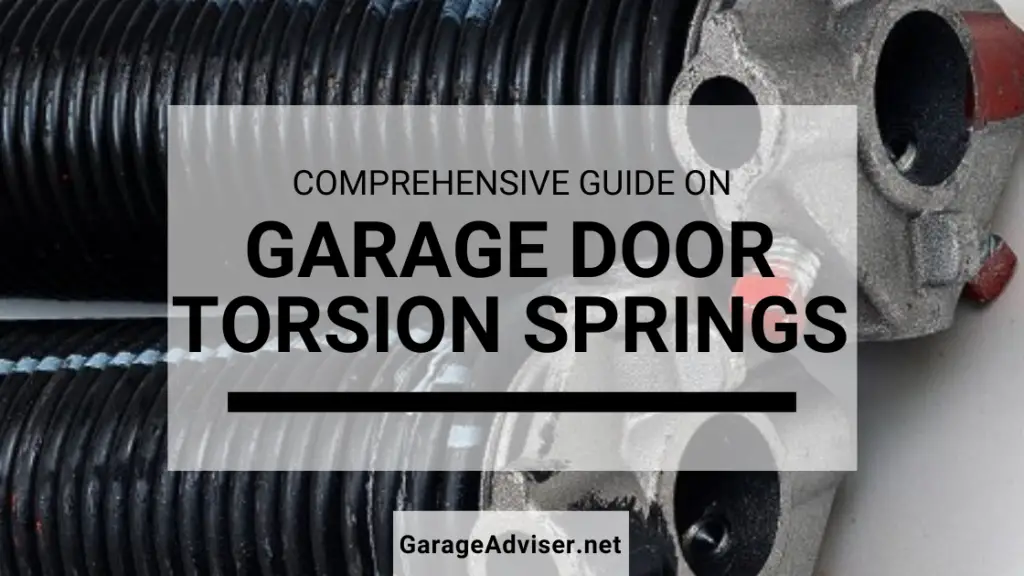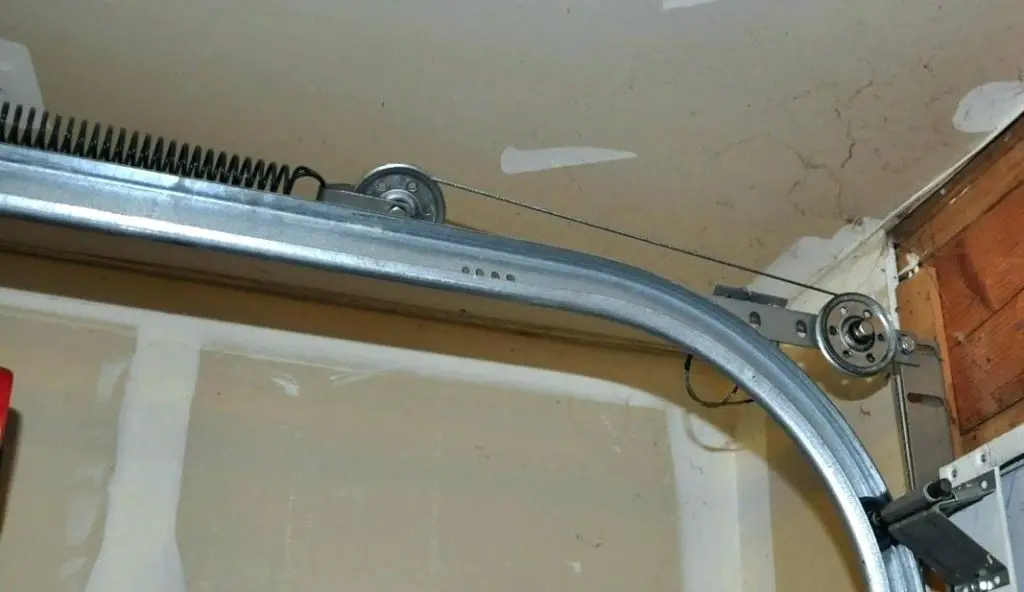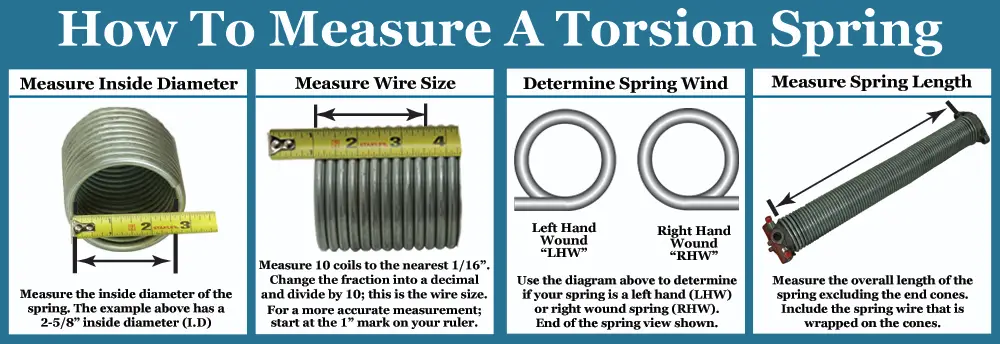
You may have already figured out that your garage door is the hardest working and most used component in your entire house. This means that it needs checkups and maintenance every once in a while. The component that is most affected by the considerable amount of force applied during opening and closing of the garage door is undoubtedly the garage door springs. Immediate replacement is mostly the right answer once you notice problems with your garage door springs.
According to research, a broken garage door spring is a cause of alarm since it is considered to be quite dangerous. When the broken garage door spring experiences stress, due to the opening and closing of the garage door, it quickly turns into a projectile that is life-threatening to the people around. And harmful to your property as well.
It is, therefore, vital to change your garage door spring immediately you notice any problems. In this guide, we will go through:
- the different kinds of garage door springs, so you know the right type to pick,
- how to establish that your torsion spring is damaged,
- how to measure your garage door torsion spring, to help you choose the right size for your door, and
- a guide on how to replace your torsion garage door spring.
Types of garage door springs
There are two main types of garage door springs, namely: extension springs and torque springs. Both of these types are unique and work in different specific ways. Thus you need a basic understanding of how they work to determine whether you need to replace your garage door springs or not. Let us take a quick dive into the different types of garage door springs.
1. Garage torsion door springs

The most common type of garage door springs is the torque springs, which have tightly wound metal coils. The coils generate the amount of torque required to lift your garage door effectively. Depending on the size and weight of your door, the number of springs will range from one to four.
The torsion springs are considered as safer and durable than the extension springs because they require lesser parts. Below is a short breakdown of the different torsion springs that are available in the market.
- Torquemaster torsion spring
They work using a two spring system and are considered as the safest spring for your garage door. Safety is optimized further thanks to the shaft hosting the springs.
- Steel rolling torsion springs
Generally, this is the type of torque spring used in commercial buildings. It contains multiple springs located right inside the torsion barrel and can support rolling doors.
- Standard torsion garage door springs
This garage door spring is the standard version found in most homes. It is usually installed above your garage door opening and across the middle is a metal shaft used for support. These torsion springs are found in residential homes since they are quite affordable and contain just one spring. More massive and heavier doors will require two of these torsion springs.
2. Garage extension door springs

Extension door springs are attached to your garage door tracks and run right across your ceiling on both of the door sides. They work by contracting and expanding whenever the garage door is raised or lowered by hand or motor. Safety belts are usually installed together with this type of garage door spring because they can be quite dangerous when they break. These garage springs are standard in residential homes since they are quite affordable. The three common types of these extension garage door springs include the following:
- Open looped
It is a bit more expensive, though easy to replace since there is a looped wire right at the end.
- Double looped
It contains two coils making it considerably stronger than its one looped counterpart. However, it can be challenging when it comes to replacing it once broken.
- Clipped ends
This kind of spring experiences less stress simply because clips are installed on the ends. That is considered as the most durable extension spring for your garage door.
How to establish that your torsion spring is damaged
If you didn’t know, garage doors are made of different parts that work together for proper functionality. Due to this, garage door springs is not the only part that can cause problems. If you would like to learn about other garage door problems then I highly recommend you read our garage door repair guide, which covers every garage door problem there is and recommended ways to fix it. Now, how do you know the problem with your door is from the torsion spring?
Two basic methods will help you to determine whether your torsion spring is damaged or not. First, start by deactivating your automatic garage door opener, then manually lift your door. The garage door will remain up with minimal effort required if your torsion spring is in good condition.
Second, try holding your door midway. Again, the door is supposed to stay there on its own. If it feels a turd little heavy, then your springs will need replacement soon because it is almost reaching the breaking point. If, on the other hand, it feels too light, then you installed improperly sized springs.
How to measure your torsion spring

Measuring your torsion spring is crucial before you start working on a replacement. The following steps will help you accurately measure your torsion garage door spring.
1. Measure the wire diameter of the torsion spring
All you need to do is measure 10 coils using your tape measure and divide the number by 10. That should give you the wire diameter.
2. Establish the inside wire diameter
This step requires you to measure both the broken components of your spring and add the two together.
3. Determine whether it is right or left-hand wiring spring
Carefully look inside your broken spring. A clockwise winding spring means that it is right-hand, while an anticlockwise winding spring means that it is left-hand.
4. Measure the height of your garage door
Use a tape measure to determine the height of your garage door. Although most garage doors have a height of between 7 and 8 meters, custom doors could be significantly taller.
How to replace the torsion spring
You first need to understand that replacing torsion springs on your garage door is not a simple task, and it can be quite dangerous. It will be simple for you if you know your way around tools and have basic mechanical knowledge. Ensure that you exercise all the necessary precautionary measures to ensure you don’t lose your hands, limbs, or even your life.
- Step 1
Start by closing your garage door before proceeding to unplug the power cord and remove the garage door opener. Always ensure that your garage door is closed to avoid injury.
- Step 2
Get all the proper tools required for the job, including winding bars, adjustable wrench, and vise grips. You must also bring a rag, ladder, ruler, and file to ensure the replacement job runs smoothly.
- Step 3
This step requires you to compare the old springs to the new springs. It is a crucial step because it ensures you have the right torsion springs to match your garage door.
- Step 4
Unwind the old springs taking extra caution to avoid any injury, especially when the fitting bar is not correctly inserted in the winding cone.
- Step 5
Loosen all the torsion hardware, including the set screws on both sides of your garage door. Be extra careful during this step to avoid any bodily harm.
- Step 6
This step requires you to install the new torsion springs and reinstall all the hardware you removed. You can then proceed to wind the new springs.
The HandyMan did a great job, explaining this process in this video:
Conclusion
Torsion garage door springs are rather tricky to deal with due to their dangerous nature. If you can afford it, then consider hiring a professional.
